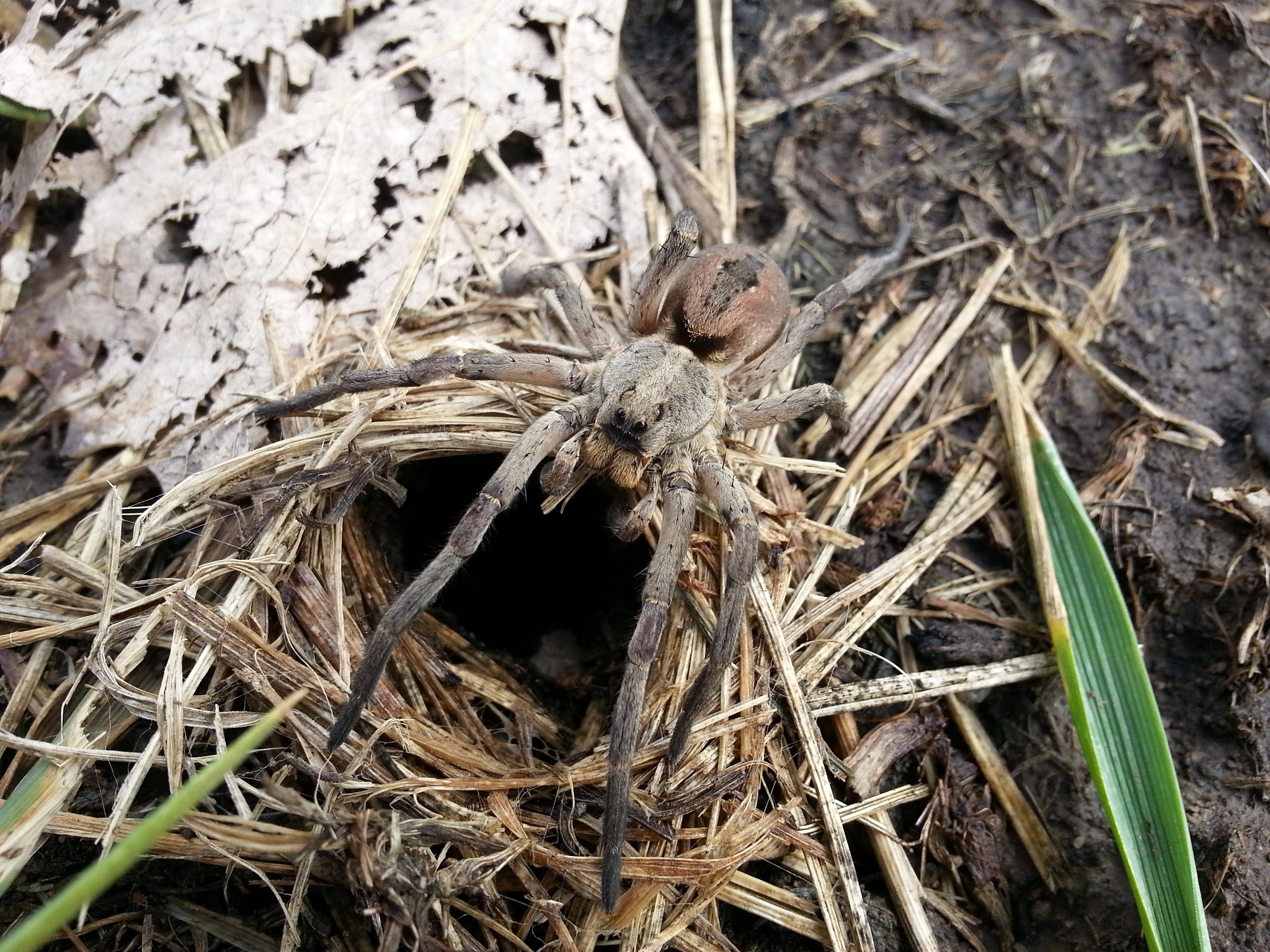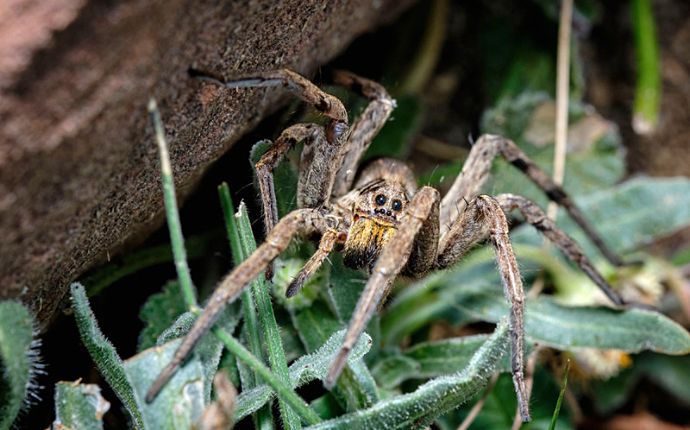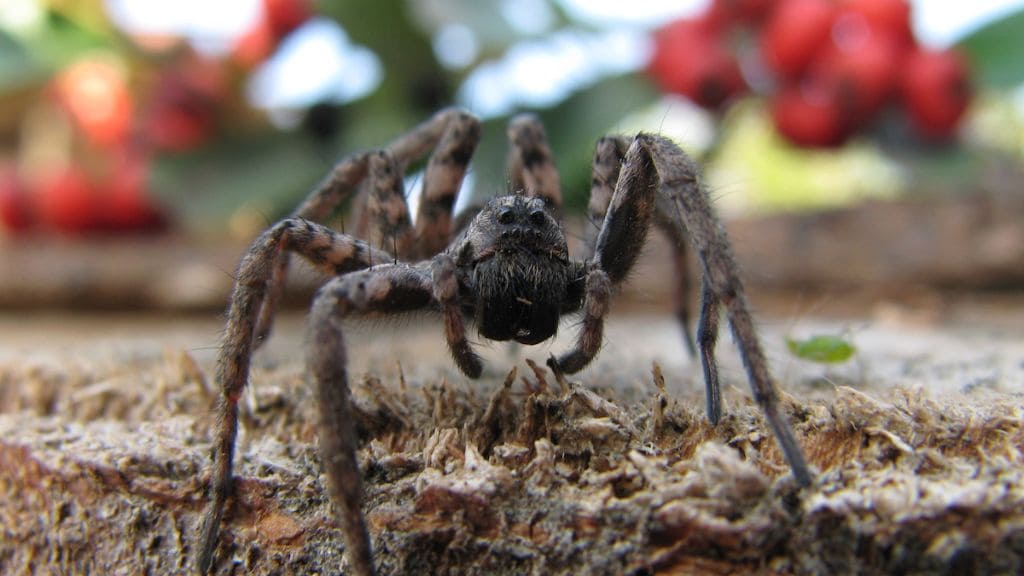Imagine stumbling upon a spider that not only survives but thrives in its underground lair. This is the intriguing world of wolf spiders, known for their impressive burrowing skills and strategic lifestyles. Unlike many spiders that spin intricate webs, wolf spiders dig deep into the ground to create sophisticated burrow systems, which serve as their homes and hunting grounds.
These burrows are more than just holes in the ground; they are meticulously constructed retreats that offer protection from predators and environmental extremes. With their strong jaws and dexterous legs, wolf spiders excavate tunnels that can extend several feet underground, creating a secure and controlled environment. This underground architecture allows them to regulate temperature, retain moisture, and stay hidden from potential threats.
As night falls, these formidable predators emerge from their burrows, using their keen eyesight and ambush tactics to capture prey. Their ability to thrive in such unique habitats highlights their adaptability and skill. In this article, we will explore the fascinating world of wolf spiders and their burrows, revealing the secrets behind their subterranean existence and the vital role these burrows play in their survival.
Introduction to Wolf Spiders

What Are Wolf Spiders?
Wolf spiders, belonging to the family Lycosidae, are robust, ground-dwelling predators renowned for their hunting prowess. Unlike many spiders that spin webs to catch prey, wolf spiders rely on their exceptional speed and agility to hunt. With their large, powerful legs and keen eyesight, they are well-adapted for stalking and ambushing their prey.
Physical Characteristics
Wolf spiders are typically hairy and can range in size from a few millimeters to over an inch in leg span. Their distinctive feature is their large, forward-facing eyes, which enhance their hunting capabilities. These spiders are usually brown or gray, often with intricate patterns on their bodies that provide camouflage in their natural habitats.
Burrowing Behavior in Wolf Spiders
Do All Wolf Spiders Burrow?
Not all wolf spiders live in burrows. While some species, particularly those in the genus Geolycosa, are known for their burrowing habits, others prefer to stay on the surface. The behavior largely depends on the spider’s species and environmental conditions.
Burrowing Wolf Spiders: Geolycosa Species
Geolycosa, commonly known as burrowing wolf spiders, are well-known for their burrowing behavior. These spiders are specialists in creating and living within vertical burrows. They prefer loose, sandy soils that facilitate easier digging and construction of their lairs.
Constructing the Burrow
Burrow Design and Construction
Burrowing wolf spiders create their burrows with remarkable precision. The burrow is typically a vertical tunnel that can extend several feet deep. The entrance is often lined with silk to reinforce the structure and prevent collapse. The spider uses its strong chelicerae (jaws) to excavate sand and debris, sometimes creating turrets or decorative elements around the entrance.
The Role of Silk in Burrow Construction
Silk plays a crucial role in the construction and maintenance of the burrow. Wolf spiders use silk to line the walls of the burrow, which helps stabilize the structure and prevents moisture loss. This silk lining also aids in detecting vibrations, alerting the spider to potential threats or prey.
Daily Life and Survival
Daily Activities Inside the Burrow
Once the burrow is established, the wolf spider spends much of its time inside. The burrow provides a controlled environment where the spider can avoid predators and regulate its temperature. During the day, the spider remains hidden within the burrow, emerging at night to hunt for prey.
Feeding and Hunting
Wolf spiders are opportunistic hunters. They lie in wait at the entrance of their burrow, ready to pounce on any unsuspecting prey that comes close. Their diet primarily consists of insects and other small invertebrates. The spider’s excellent vision and agility allow it to quickly seize and subdue its prey.
Reproductive Behavior and Burrow Use

Mating and Egg Sac Care
Mating occurs outside the burrow, but once fertilization is complete, the female returns to her burrow to lay eggs. She constructs a protective egg sac, which she attaches to the entrance of the burrow or carries with her. After the spiderlings hatch, the female may carry them on her back until they are ready to fend for themselves.
Spiderlings and Their First Burrows
Spiderlings typically remain close to their mother’s burrow during their early stages of life. They may use the maternal burrow as a refuge until they are mature enough to create their own burrows. The presence of multiple young can sometimes lead to competition and cannibalism among siblings.
Seasonal Changes and Burrow Adaptations
Summer vs. Winter Burrows
The burrow’s depth and structure may change with the seasons. In summer, burrows are generally shorter and less elaborate, while in winter, they can extend deeper into the ground. This deeper burrow helps the spider maintain a stable temperature and protect itself from extreme weather conditions.
Adaptations to Environmental Changes
Wolf spiders are adept at adapting their burrows to environmental changes. They may reinforce their burrows with additional silk or modify the structure to accommodate shifts in temperature or moisture levels. These adaptations ensure their survival and comfort throughout the year.
Interactions with Other Species

Predators and Threats
Despite their burrowing skills, wolf spiders are not immune to threats. They face predation from various animals, including birds, lizards, and other spiders. The burrow offers some protection, but the spider must be vigilant and quick to retreat if danger approaches.
Symbiotic Relationships
In some cases, wolf spiders may have symbiotic relationships with other organisms. For example, certain mites may live on the spider’s body, feeding on parasites or detritus. These relationships can benefit both the spider and its smaller companions.
Scientific Research and Observations
Research on Burrowing Wolf Spiders
Researchers have conducted various studies to understand the behavior and biology of burrowing wolf spiders. These studies often involve examining burrow construction, feeding habits, and reproductive behaviors. Insights gained from such research help improve our understanding of these fascinating arachnids.
Field Observations and Findings
Field observations provide valuable data on wolf spider behavior in natural settings. Observing these spiders in their native habitats allows scientists to document their burrowing practices, interactions with prey, and responses to environmental changes.
FAQs About Wolf Spiders and Their Burrows

1. Do all wolf spiders live in burrows?
No, not all wolf spiders live in burrows. While some species, particularly those in the genus Geolycosa, are known for their burrowing habits, many wolf spiders prefer to hunt and live on the surface. Their behavior varies depending on the species and environmental conditions.
2. What does a wolf spider’s burrow look like?
A wolf spider’s burrow is typically a vertical tunnel that can extend several feet deep, depending on the species and soil type. The entrance is often lined with silk to reinforce the structure, and in some cases, the spider may create a turret or decorative elements around the entrance.
3. Why do wolf spiders build burrows?
Wolf spiders build burrows to provide protection and regulate their environment. The burrow offers a stable microhabitat where the spider can avoid predators, control temperature, and retain moisture. It also serves as a strategic location for ambushing prey.
4. How do wolf spiders construct their burrows?
Wolf spiders use their strong chelicerae (jaws) to excavate sand and debris from the ground. They line the burrow with silk to stabilize the structure and may create additional features like turrets. The spider meticulously arranges sand pellets and may use silk to compact and reinforce the burrow.
5. What do wolf spiders eat?
Wolf spiders are carnivorous and primarily feed on insects and other small invertebrates. They ambush their prey by lying in wait at the entrance of their burrow and pouncing on any unsuspecting animals that come close.
Conclusion
Wolf spiders with their formidable hunting skills and fascinating behaviors, offer a remarkable glimpse into the diverse world of arachnids. Their burrowing habits, particularly those of species like the Geolycosa, highlight their adaptability and survival strategies. By constructing elaborate burrows, these spiders create a controlled environment that shields them from predators, regulates temperature, and provides a strategic advantage for capturing prey.
The intricacy of their burrow construction, combined with their nocturnal hunting prowess, makes wolf spiders a subject of endless fascination for arachnologists and nature enthusiasts alike. Whether they’re building vertical tunnels in sandy soils or adapting their burrows for seasonal changes, these spiders demonstrate a complex interplay between their physical adaptations and environmental needs.
Understanding wolf spiders’ burrowing behaviors not only enhances our knowledge of these remarkable creatures but also underscores the broader ecological roles they play. As we continue to explore and study their lives, we gain a deeper appreciation for the diverse strategies that spiders use to thrive in their natural habitats.

